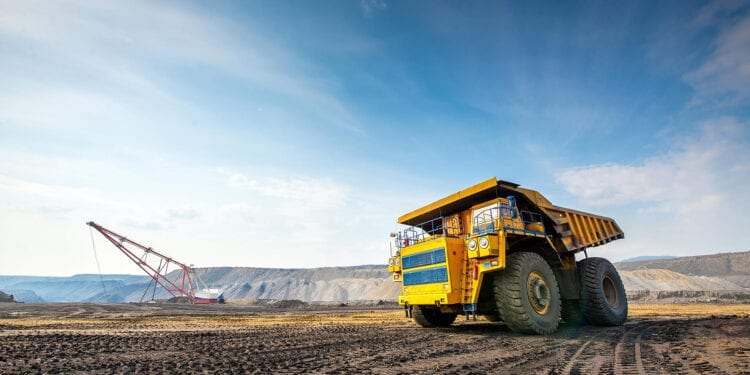Intersects 9.0m @ 6.1 g/t Au, 4.0% Cu, 3.3% Zn, And 18 g/t Ag
Arizona Metals Corp. (TSXV:AMC, OTCQX:AZMCF) has expanded the recent Kay Mine gold discovery with positive results from an additional four drill holes.
CEO, Marc Pais, said the recently discovered gold-rich zone of open-ended mineralisation at the Kay Mine is located in an area previously untested by historic drilling or exploration.
Branch Hole 21A intersected 63 m at a grade of 1.3 g/t Au, 3.1% Zn, 0.5% Cu, and 59 g/t Ag., including a higher-grade interval of 16.9 m grading 2.5 g/t Au, 4.1% Zn, 0.5% Cu, and 81 g/t Ag. Further up-hole, 21A also intersected 9.4 m grading 0.6 g/t Au, 2.3% Zn, 1.2% Cu, and 9 g/t Ag. Hole 21A entered mineralisation at a vertical depth of 362 m.
Branch Hole 25A intersected 65 m of 1.9 g/t Au, 2.2% Zn, 1.0% Cu, and 19 g/t Ag, including two separate higher-grade intervals of 7.3 m grading 2.1 g/t Au, 1.9% Zn, 3.7% Cu, and 30 g/t Ag, and 6.1 m grading 8.0 g/t Au, 3.7% Zn, 2.7% Cu, and 37 g/t Ag, from a vertical depth of 620 m. Hole 25A is a branch from hole 25 (79 m at 2.3 g/t Au, 2.8 % Zn, 1.4 % Cu and 43 g/t Ag), and is located 30 m north and 25 m above hole 25, in order to test both the lateral extension and vertical continuity of mineralisation.
Hole 25B intersected 4.3 m grading 0.9 g/t Au, 0.9% Zn, 0.9% Cu, and 25 g/t Ag, within a broader 35 m interval of stringer to semi-massive sulphide mineralisation.
Hole 26 intersected 76 m grading 1.6 g/t Au, 4.2% Zn, 0.8% Cu, and 33 g/t Ag, including two separate higher-grade intervals of 14.9 m grading 1.8 g/t Au, 9.7% Zn, 0.7% Cu and 43 g/t Ag, and 9.0 m at 6.1 g/t Au, 4.0% Cu, 3.3% Zn, and 18 g/t Ag, from a vertical depth of 475 m. This hole was targeted to test a zone located 50 m below hole 24 (91 m at 1.3 g/t Au, 3.4 % Zn, 0.5 % Cu, and 44 g/t Ag), but due to excessive flattening while drilling, ended up at a similar elevation to hole 24, but 15 m to the north.
“These four drill holes validate and extend the new gold-rich zinc zone discovery, with broad intervals of mineralisation ranging from 63 m to 76 m, and true widths estimated at an average of 80%,” Mr Pais said.
“Hole 27 (assays pending) demonstrates that mineralization extends at least 100m deeper than reported by previous operators. Holes 27A and 27B (assays pending) have encountered semi-massive to massive sulphide mineralisation at thicknesses similar to those reported in the discovery holes, while also demonstrating the potential for the discovery zone to both extend at depth and increase on strike as it deepens.
“The first few holes drilled in the discovery zone were on a large step-out spacing of 100 m to 150 m. Subsequent branch holes to infill between these holes are demonstrating excellent vertical continuity, as well as lateral extension of mineralisation on strike to both the north and south.
“Holes at the lab with assays pending, as well as those currently in progress, and planned, are targeted at aggressively testing the expansion potential of this new discovery.
“A third drill rig was delivered to site earlier this month and is currently drilling a target located 500 metres north of the Kay Mine. With the recently completed financing of $21 million, the company is fully-funded to complete the 75,000 metre Phase 2 expansion programme.”
Hole 27 (assays pending) is located approximately 110 m below hole 25. Branch hole 27A (assays pending) was drilled at the same elevation as hole 27, but 110 m to the south. Hole 27B (assays pending), was drilled 50 m to south of 27, in order to test for the extensions at depth of high-grade gold-zinc zones observed in holes 21A, 24, 26, 25, and 25A. Hole 28 (assays pending) targeted an area located 100 m above hole 25, and 100 m north of hole 25B.
The bulk of the mineralized intervals in holes 21A, 25A and 26 are located between the North and South Zones (Figure 1), outside of the area defined in the historic estimate by Exxon. Historical records show very little exploration in this area by Exxon, or other previous operators.
Hole 27 was drilled 110 m deeper than hole 25. Hole 27 is 400 m deeper than 21A. These newly defined, wide, high-grade intervals demonstrate the potential to add a significant tonnage of gold-zinc mineralisation outside of the historic resource, which is predominantly copper-gold in composition.
For further information please visit: https://www.arizonametalscorp.com/












